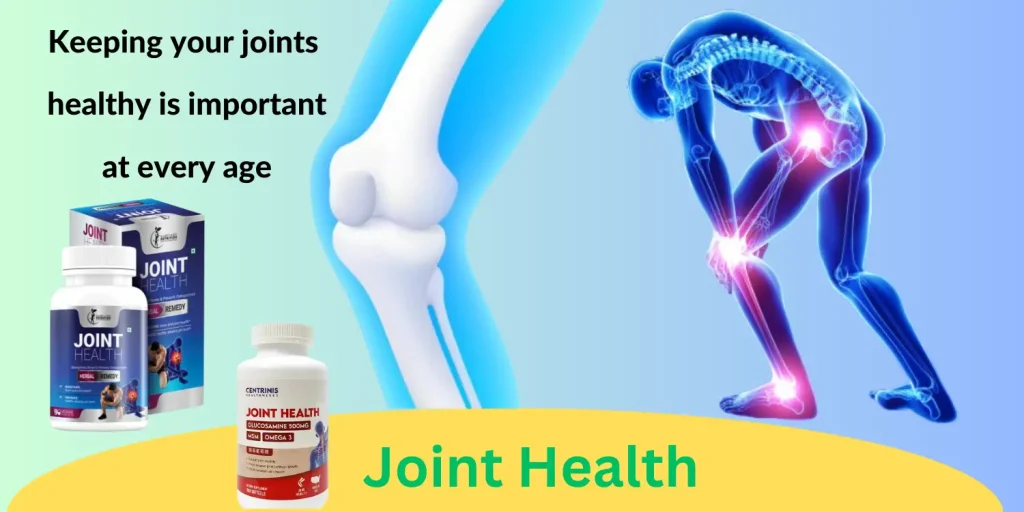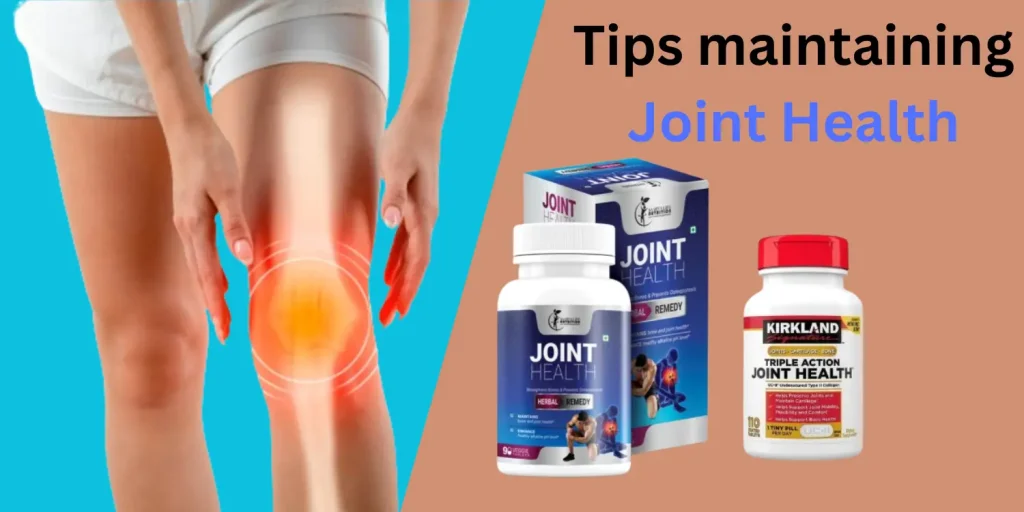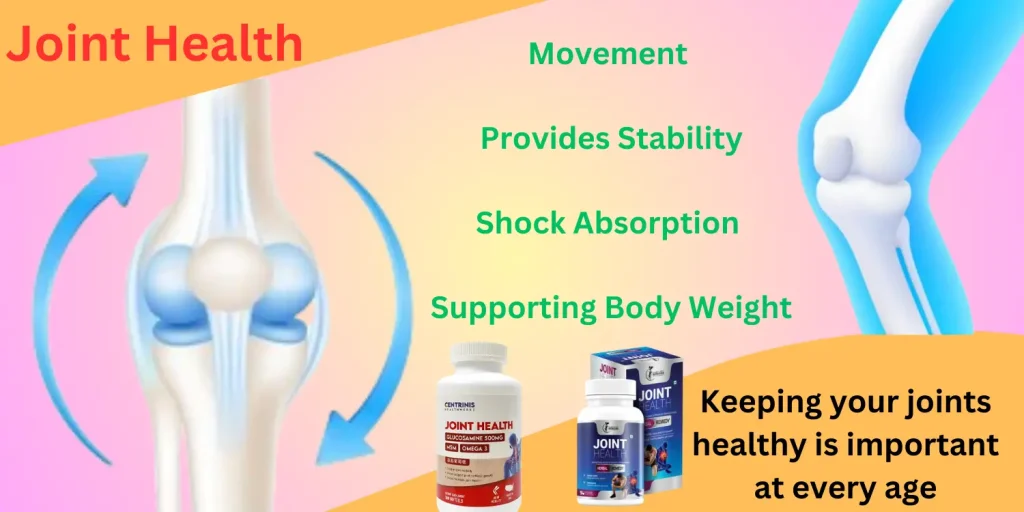Introduction about joint health?
Flexibility, mobility, and overall quality of life in most cases are a direct result of the fitness of a person’s joints. Various types of flexible interconnections involving bones, which are intricately involved in lending the body its shape, are referred to as joints. Arthritis, growth, work, play, and general holding of objects can, over time, lessen the effective function of joints due to age, wear, lifestyle diseases, diseases in general, or other injuries. In order not to experience the limitations and discomfort, exercise caution when it comes to joints.
Reducing the stress on the joint through weight management, exercise, and diet incorporating nutrients like calcium, vitamin D, and omega-3 fatty acids are other contingency factors of joint health. Also, the muscles that are grouped around the joints must be improved to augment their overall flexibility and support. Instant solutions to future issues can be made through addressing future causes, like taking early care of joint pain and developing good, joint-friendly habits.
This means that physical ability is not the only aspect to consider when it comes to joint health promotion; other factors may comprise the long-term health of the individuals and continued activity level.

How can I make my joints healthy?
Comfort and quality of life in general depend on the health of your joints. There are several steps one can take to prevent joint pains and keep joints healthy.
First, to reduce the pressure on the joints of the lower limbs, such as the knees and hips, follow a healthy weight as a general guide. It should be noted that significantly fewer joint issues are found in overweight people, or it can be even significantly minimized just by losing a little bit of weight. Physical activity should not be skipped, especially when performing activities that build muscle around the joints. Some forms of exercise known to enhance joint function, reduce joint stiffness, and improve joint flexibility include yoga, walking, and swimming.
It also involves proper nutrition that consists of foods low in fat and cholesterol, high in fiber, and with many vitamins. Take enough calcium and vitamin D to help the body build strong bones during the fight against inflammation; one should eat foods rich in omega-3 fatty acids like nuts, seeds, and fatty fish. If one’s body is well hydrated, this will reduce wear and friction on the joints as they are well lubricated.
Also, break up long activities into shorter intervals to minimize the students strain and the effect of a slouching position. Finally, also do not neglect your body, and always look for a solution to any aching or issues that your body may be going through, and any further care for the joints may be required. Always consult a health care practitioner.
What is joint health?
This is a broad concept that embraces the wellness state and functionality of the joints, which are spaces where the bones are linked in such a way that they can move and perform structural support duties. Easy movement, free joint movement, and everyone’s general well-being require sound joints. They consist of surrounding muscles, cartilage, ligaments, and tendons, as well as synovial fluid, all of which work in complete harmony, ensuring the joint experiences no pain and moves efficiently without any hitch along its axis.
It’s important for joints to be able to withstand the stress of use in the course of any event and allow for full mobility. Joint health, however, depends on a number of factors that include age, overuse, injury, poor posture, and various diseases, including arthritis. Some of the symptoms could be similar to those associated with pain, stiffness, edema, and decreased movement.
To support the health of joints, it is required to take physical exercises, consume nutrient-rich food, increasingly take water, and keep the body weight off to reduce pressure on the joints. Through suggested precautions in work, weight lifting, or bad postures, the movements of a patient’s joints can be preserved and recommend the level of mobility that will enable a patient to remain active up to their old age.
What are the benefits of using this joint health?
It is therefore important to understand that there are several benefits that come with having healthy joints for one’s overall health and well-being. It is much less of a problem and far more comfortable to tackle numerous routine tasks when your joints are not inflamed and restricted. This makes it possible for you to participate in physical activity, which enhances circulation and strength and prevents being overweight.
Further, the opposite is the case, meaning having healthy joints reduces the likelihood of getting diseases such as tendinitis, osteoporosis, and arthritis, which hinder movement and cause chronic pain. It will enable you to age gracefully and perhaps sidestep the breakdown of tissues that characterize joint woes by focusing on joints.
Joint care also assists you in being able to stand straight, as well as put less pressure on the muscles and tissues around these areas. This can enhance your general performance by minimizing pain and preventing overuse issues. Some long-term benefits of joint health include liberation, the’standard of living, and the ability to carry out hobbies/hard physical work past retirement age.

How can I lubricate my joints naturally?
One way to lubricate your joint naturally is by increasing the synovial fluid, which is a substance that reduces the level of friction and hence increases contraction. There are quite a number of strategies that can apply to this process.
Prevention is better than cure, and the first step towards prevention is to ensure that the patient takes enough water. The viscosity of the synovial fluid is maintained by water, and, therefore, the fluid can be able to lubricate the joints efficiently. To help your joints stay at their best, try to drink enough water each day.
Moreover, you should increase your intake of omega-3 fatty acids because they provide the joint with lubrication. The good fats, which are found in walnuts, chia seeds, and salmon, are beneficial in maintaining appropriate cartilage functioning and reducing inflammation.
Other aspects of exercise include frequent exercise, which is also important in greasing the joints. Sailing, calisthenics, the use of non-load-bearing equipment during workouts, or exercises that strengthen muscles around joints promote the production of synovial fluid.
Additionally, there are many nutrients that can help to keep the lubricating substance of the joint and the joint itself healthy. Produced by fruits and vegetables, it decreases inflammation, while collagen, which can be gotten from bone broth or supplements, aids in maintaining the cartilage sound.
Following these measures, however, facilitates natural joint lubrication, hence flexibility and mobility.
What is the best thing to take for joint health?
The best vitamins and nutrients that combine to serve the purpose of natural ingredients that help to repair cartilage, reduce inflammation, and lubricate joints are among the best natural remedies for those suffering from the problem of joint pains. Among the most successful are:
1. Glucosamine and chondroitin: These two substances are crucial for cartilage health and are often used together to support joints, reduce pain, and improve mobility.
2. Omega-3 Fatty Acids: These sources are flaxseed and fish oil that contain omega-3 fatty acids that can reduce inflammation that may be caused by disease such as arthritis by reducing stiffness and pain.
3. Curcumin, or turmeric: It can even help as an anti-inflammatory, which is vital when looking for remedies to bra and swelling and pain of the joints. Sometimes black pepper is added to it to help with absorption.
4. Collagen: This protein decides the strength and flexibility of cartilage. The addition of collagen to the diet effectively enhances the health of the joint and reduces its susceptibility to decline.
5. Calcium and vitamin D: These nutrients are necessary to the body, especially in as far as bone health is concerned, because they ensure that joints are well maintained, thus reducing instances of brittle bones or fractures.
These supplements can be taken together for a considerable improvement in joint health, accompanied by a balanced diet and upright exercise.
How can I health my joints fast?
Time, proper rest, and mobility, along with the use of appropriate focused therapy, are all essential for rapid joint repair. Here are some practical actions to encourage a quicker recovery if you’re experiencing joint discomfort or injury:
1. Rest and Protect: Recollect; avoid any actions that put pressure on your joints in order to give them time to recover. Wearing a brace or support is another way of reducing stress and preventing further injuries from happening.
2. Ice and Heat Therapy: If applied many times a day for 15 to 20 minutes each time, ice helps reduce swelling and inflammation. Try to use heat in order to stimulate circulation and to help muscles relax once the problem has been irritated or provoked.
3. Anti-inflammatory Diet: Detoxifying foods with anti-inflammatory properties such as green leaves, turmeric, ginger, and fish rich in omega-3 fatty acids. Avoid candy and other processed foods since these can trigger inflammation more actively.
4. Gentle Exercise: For maintenance, only after a certain period of time, one should introduce other movements that accompany the pains, such as walking, swimming, or even stretching.
5. Supplements: If you want the cartilage to get better, you should also consider using supplements that may help the joints, for example, glucosamine, chondroitin, or collagen.
This may help to enhance joint health and reduce the duration of recovery when applying those approaches.
joint health conclusion?
Therefore, mobility, flexibility, and overall welfare into old age are directly tied to keeping joints in tip-top condition. Not only do healthy joints reduce our possibility of building ailments such as osteoporosis or arthritis, but they also enable us to execute all sorts of tasks without experiencing any pain. It means that you should take a more active position and make every single effort to protect your joints, perform exercises regularly, have a proper and healthy diet, drink water, and try to control obesity.
There are, however, supplements that can help in maintaining joint density, among them being collagen, omega-3 fatty acids, and glucosamine. Joint pain in the long term can also be prevented through mastering the body’s signals and treating pains as soon as they happen. If you are lucky enough not to develop any joint-related issues, then having the joints strengthened through the recommended care and attention will enable you to have a healthy, active lifestyle for many years. It is important for people to take care of the joint because it adds value to movement in the future.
